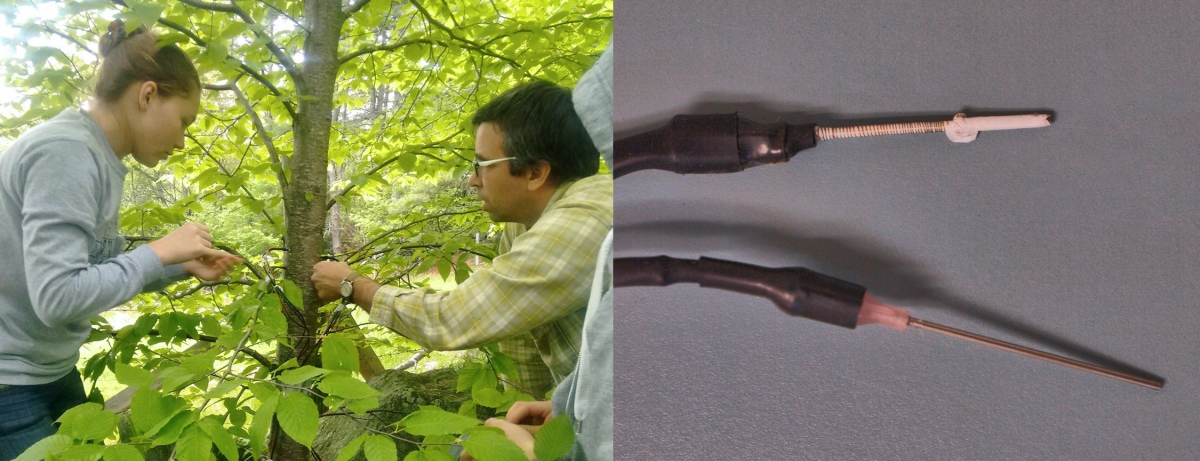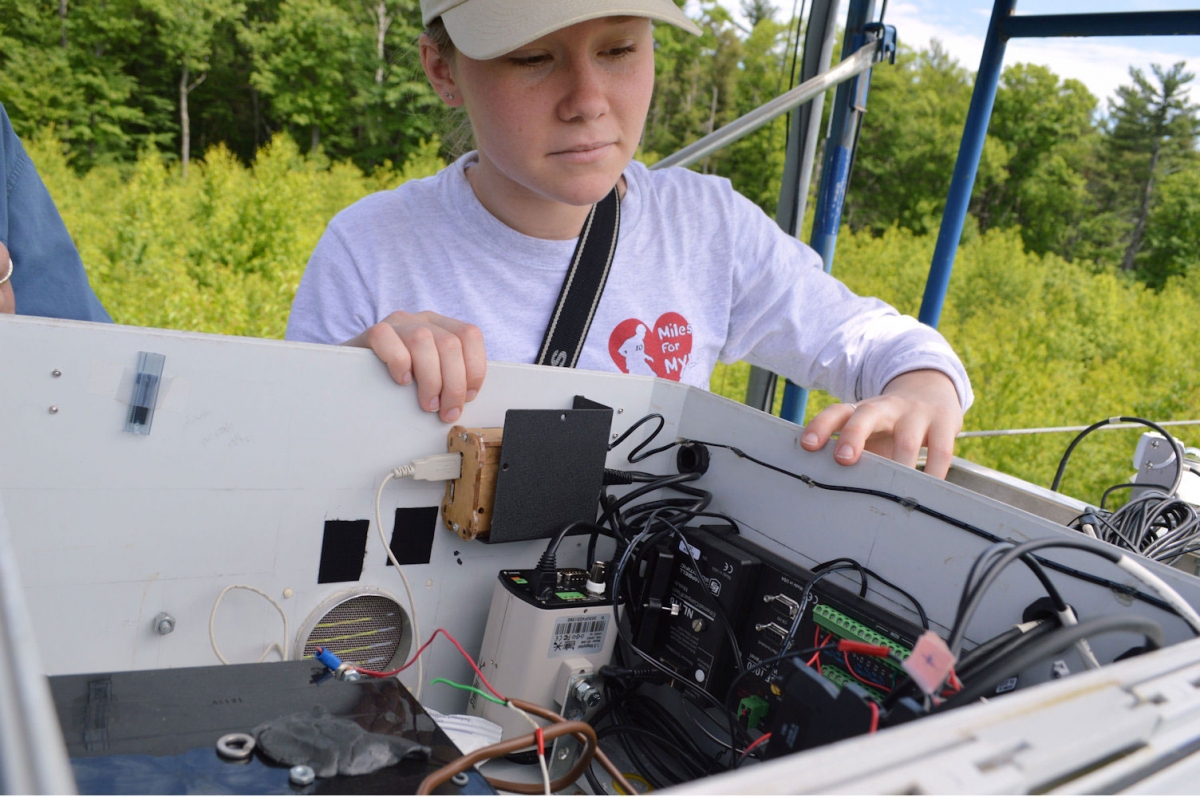You are here
What Has Transpired Here? Automating Sap Flow Measurements to Track Forest Health
One of the most direct ways to track forest health is through water content – and in a forest, water is everywhere, from the soil, to the trunks, to the leaves and even the air. Tree sap itself is comprised of at least 90% water. But when water is everywhere, measuring it reliably gets tricky.
Since most of the water in a tree will flow through the trunk at some point, measuring a tree’s sap flow is a good way to estimate how much water there is – and, therefore, how healthy the tree is. In one day, a single large tree is capable of drawing up to 100 gallons of water from the soil. One method of measuring the rate of sap flow uses tree probes, which can be inserted into the trunks to see how quickly the sap is moving. However, a single commercial probe can cost upwards of $200, which is inaccessible to most research budgets, especially when you want to measure several trees at once. But with a few thermocouples, a circuit board or two, and some clever coding, it becomes possible to set up a homegrown sap flow sensor system for a fraction of the cost.
Approximately ten years ago, all of the trees in a small area of Prospect Hill were cut down to track how a clear-cut region grows back over time. In order to measure the regrowth and health of the trees in the clear cut, several undergraduate students, researchers, and staff at Harvard Forest have collaborated over the past few years to develop a robotic tram to help with this monitoring. The tram is much like a miniature cable car; it is suspended ten meters from the ground by lengths of cable stretching some 50 meters between a pair of towers. The tram rides on the cables and passes over a swath of the clear cut. As it trundles along, the on-board computer gathers data from the numerous sensors installed in the chassis, and then reports its findings back to the base station.
Because we want to measure water content in the clear cut, the next sensor to be installed in the tram will be a radar transceiver. Radar takes a hands-off approach to measuring; while sap flow sensors must be tapped directly into the tree trunks, radar can be used to measure tree water content remotely. When a radar pulse is sent out, it “reflects” off any nearby objects; water is a lot more reflective than wood, and so the higher the water content of the tree, the more it will reflect the radar. By sending out radar pulses and measuring how much bounces back from the trees, it is possible to estimate of the amount of water present.
Setting up this sort of radar system can be complex, though, and some simpler sensors are required to verify its measurements; this is where I (and the sap flow sensors) come in. At the start of this summer, we already had a rudimentary sap flow system with tree probes ready to install and use. Although these probes were straightforward to set up, the data they collected was difficult to access, and the whole system could only run continuously for a little over two days before the batteries needed replacing.
After identifying these and other shortcomings during the first two weeks at the Forest, I made a plan of attack for the remaining nine weeks and jumped right into the coding. With a basic understanding of computer logic (but mostly a whole lot of creative Googling), I cobbled together a code that soon surpassed the existing one. This new code is already “smart” enough to check how many probes are connected, and it produces an output file that can be read even while the program is still gathering data. These few small changes already make the data significantly easier to handle.
The remaining weeks still contain several challenges, though. One of the biggest shortcomings of the sap flow system is that we still have to physically connect to the board, via USB, in order to retrieve the data. The clear cut is a bumpy 20-minute drive from the lab, which means a lot of unnecessary time is spent trekking to and from the site. It will save a lot of time and effort if instead, anyone with an Internet connection could access the data via a user-friendly website – and that’s what we aim to develop. Additionally, we are looking at solar panels as a way to provide additional power to the system during the day, in order to increase the duration of data collection. Finally, as with most research, it’s one thing to have everything working nicely in the lab; but bringing the equipment out into the field and collecting some meaningful data may well turn out to be another story. We want to make sure that we leave enough time for troubleshooting the new system before we wrap things up for the summer.
As we move forward with this project, we hope this sap flow sensor system will enable other researchers to more closely examine water content and track forest health as the trees in the clear cut continue to grow back. Forests are a central part of New England’s economy, history, and rustic charm; but on a more serious note, climate change may cause forests in this region to experience more severe droughts in the years to come. Being able to monitor the water in the trees will be crucial for making informed decisions about how to best take care of one of the Northeast’s central features, in order to preserve them for the generations to come.



